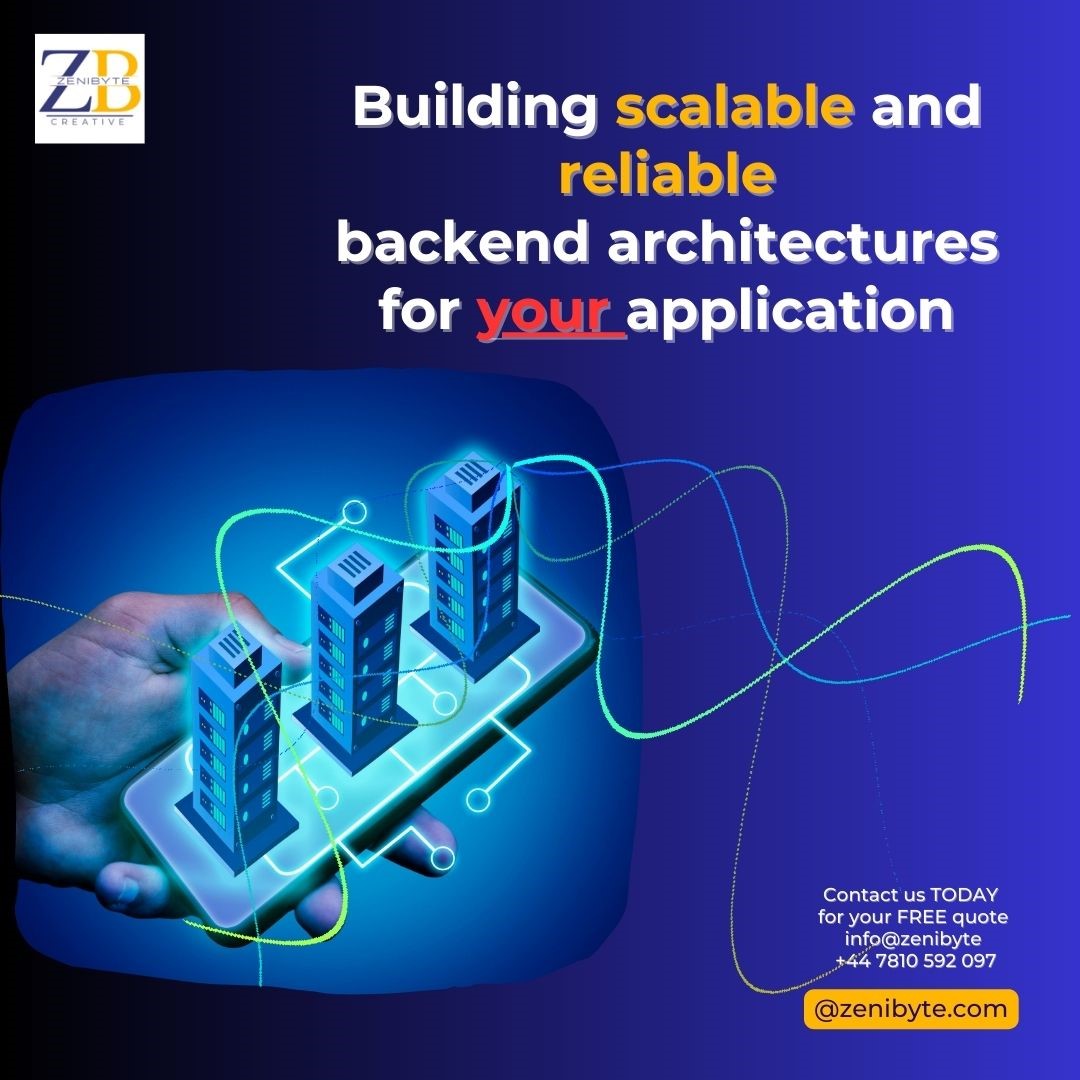


Zenibyte Creative
Building scalable and reliable backend architectures for your application.
As the demand for scalable and reliable applications continues to grow, building a robust backend architecture is becoming increasingly important. Let's explore each of these areas and how they can be combined.
What is backend architecture?
A backend architecture is an infrastructure that powers the server side of an application. It includes the hardware, software, and networking components that are responsible for processing user requests, storing data, and delivering responses back to the user.
Why is scalability important for backend architectures?
Scalability is essential for backend architectures because it allows them to handle increased traffic without sacrificing performance. As an application grows, it needs to be able to handle more users and data, and if the backend architecture isn't scalable, the application will become slow and unresponsive. This can lead to a poor user experience, lost revenue, and damage to your brand reputation.
How to build a scalable and reliable backend architecture?
Use microservices architecture-
Microservices architecture allows you to break down your application into smaller, more manageable services that can be developed and deployed independently. This makes it easier to scale individual components of your application as needed.
Use load balancing-
Distribute incoming requests across multiple backend instances to ensure even utilisation of resources and improve fault tolerance. Load balancers can be implemented using hardware appliances or software-based solutions. They can use different algorithms (e.g., round-robin, least connections) to allocate requests among backend servers.
Use a distributed database-
A distributed database allows you to spread your data across multiple servers, making it easier to scale your database as your application grows
Use caching-
Caching is a technique that stores frequently accessed data in memory, reducing
the number of database queries required to serve a request. This can help to improve the performance of your application and reduce the load on your backend servers.
Use monitoring and alerting -
Monitoring and alerting tools can help you to identify and address issues with your backend architecture before they impact your users. This can include things like server downtime, high CPU usage, or slow database queries.
Other key principles and architectural patterns to consider.
- Microservices Architecture: Divide the application into smaller, loosely coupled services that can be independently developed, deployed, and scaled. Each microservice focuses on a specific business capability and communicates with other services via lightweight protocols (e.g., REST, messaging queues).
- Asynchronous Processing: Use messaging queues or event-driven architectures to decouple components and enable asynchronous processing. By offload in time-consuming tasks to background processes or separate services, the main application can respond quickly to user requests and scale independently.
- Database Scaling: Employ techniques like database sharding (partitioning data across multiple database instances) or replication (creating multiple copies of the database) to handle increasing data volumes and improve performance. Additionally, consider using database technologies that are designed for scalability, such as NoSQL databases or distributed SQL databases.
- Automated Deployment and Infrastructure as Code: Use continuous integration/continuous deployment (CI/CD) pipelines and infrastructure-as-code (IaC) tools to automate the deployment process. This allows for reproducible deployments, version control of infrastructure configurations, and easier rollbacks in case of issues.
To summarise building a scalable and reliable backend architecture is critical to the success of any application. By using microservices architecture, load balancing, a distributed database, caching, and monitoring and alerting tools, you can build an architecture that can handle any level of traffic. With the right backend architecture in place, you can ensure that your application remains performant and reliable, even as your user base grows.
Take control of your project. Here, at Zenibyte, we offer our skills and reliable, professional advice for website design and development, WordPress solutions, eCommerce, experienced Mobile app design / development, solid Software Solutions, Digital Marketing, SEO Optimisation and much, much more.
To summaries building a scalable and reliable backend architecture is critical to the success of any application. By using microservices architecture, load balancing, a distributed database, caching, and monitoring and alerting tools, you can build an architecture that can handle any level of traffic. With the right backend architecture in place, you can ensure that your application remains performant and reliable, even as your user base grows.
Take control of your project. Here, at Zenibyte, we offer our skills and reliable, professional advice for website design and development, WordPress solutions, eCommerce, experienced Mobile app design / development, solid Software Solutions, Digital Marketing, SEO Optimisation and much, much more.
See how we can build scalable and reliable application for your business.
Book a call today.
Zenibyte Creative
Zenibyte is a leading web and mobile app development company in the UK.